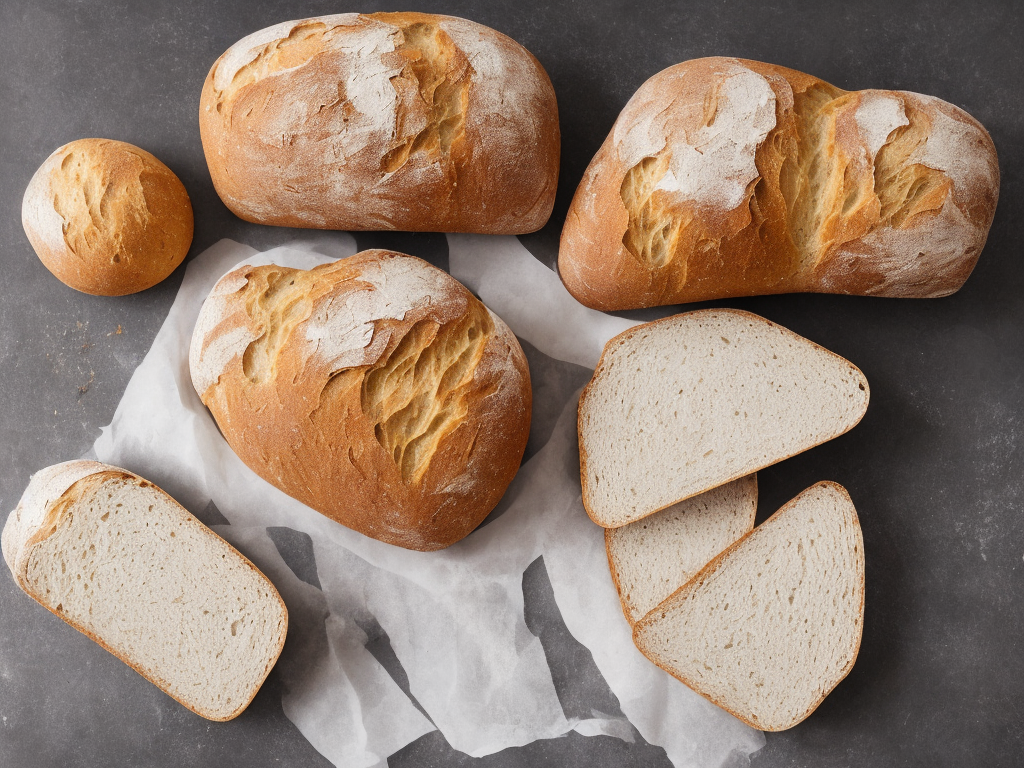
Flour is an essential ingredient that is used in a plethora of delicious recipes. Prior to being packaged and sold, flour generally undergoes a process of bleaching or is left unbleached. This article aims to unpack the differences between bleached and unbleached flour, and how it can impact baking.
Bleached flour is flour that has been chemically treated to whiten and soften it. This process involves exposing the flour to chemicals such as benzoyl peroxide or chlorine gas. The chemicals used in the bleaching process help to breakdown the gluten in the flour, which results in a softer and smoother texture. The bright white color that is commonly associated with bleached flour is an additional byproduct of this process.
Unbleached flour, on the other hand, is flour that has not been chemically treated in any way. It has a more natural creamy color and coarse texture. It is often said that unbleached flour has a more robust flavor profile due to the presence of a greater amount of bran and wheat germ. Because the gluten in unbleached flour has not been broken down, it generally has a higher protein content, which can alter the way it behaves in recipes.
In baking, flour serves as the foundation for many recipes, and its texture can have a massive impact on the final product. Bleached flour is often favored by commercial bakers because it results in a lighter and finer texture. Bleached flour is best suited for recipes that require a delicate texture such as cakes, cookies, and pastries.
Unbleached flour is commonly preferred by home bakers as it is more versatile and can be used in a wide spectrum of recipes, including bread, biscuits, and pie crusts. The gluten content in unbleached flour contributes to the development of structure and elasticity in bread dough. When gluten develops, it forms a web-like network that traps the carbon dioxide produced by the yeast or baking powder used in the recipe, resulting in a light and airy finished product.
In addition to their effects on texture and taste, bleached and unbleached flour can also differ in their nutritional content. Unbleached flour contains more nutrients and dietary fiber than bleached flour. The bleaching process involves stripping the flour of some of its natural nutrients, making bleached flour less nutritionally dense than unbleached flour.
It is worth noting that while unbleached flour may be considered more nutritious than bleached flour, the difference is not substantial. When it comes to the nutrient content of flour, both types contain a similar mix of carbohydrates, protein, and fiber. However, if you are looking to incorporate more fiber into your diet, unbleached flour may be the better choice.
When it comes to baking, there can be some noticeable differences between bleached and unbleached flour. One challenge of working with unbleached flour is its higher protein content; this can make it more challenging to work with than bleached flour. It may result in a denser, chewier, or tougher end product if not handled correctly. If working with unbleached flour, it’s important to pay attention to the recipe's ratios and adjust accordingly. A common example is when baking bread recipes that require a combination of strong and weak flour. Unbleached flour can often be used as the “strong” flour to give the bread the right structure and texture.
Alternatively, when working with bleached flour, the lower protein content can make the dough over-spread or leave a more delicate crumb, making it challenging to achieve the desired texture in some recipes. However, it offers a more consistent texture for cakes and pastries.
In conclusion, while there is no clear winner between bleached and unbleached flour, it ultimately depends on the type of recipe you are making and your personal preference. Bleached flour offers a lighter, more delicate texture, while unbleached flour contributes to a robust flavor profile and offers greater nutritional content. To decide which flour to use in a recipe, consider the texture and flavor, and pay attention to the protein content.
Whether you choose to use bleached flour, unbleached flour or a combination of both, remember that baking is a very finicky and precise process. It’s important to use the right flour that your recipe calls for and follow the instructions meticulously to ensure a successful finished product. Happy baking!
 Self-Instruct
Self-Instruct